In this article, we will talk about what is paragliding, how a paraglider works, and where paraglider pilots fly. We will also look at the most remarkable flights in the history of Kilimanjaro - in the early times when it was illegal, and more recently when paragliding flights were authorized by the national park. How to fly on a paraglider today, how much it costs, how paragliding is organized on Kilimanjaro - you will find all the information here from a top-ranked Tanzanian operator Altezza Travel.
If you already have paragliding experience and are interested in practical questions such as how to fly on Kilimanjaro, what are the costs, and other logistics - you can go straight to the answers.
What is paragliding?
Paragliding is a spectacular extreme sport in which pilots soar through the air on paragliders. A paraglider is a soft banana-shaped wing that is controlled by a system of slings. The pilot sits in a harness or reclines in a seat underneath the wing, with a reserve parachute behind his back. There are no motors and rigid elements in this construction - the flight is performed by gliding in the air. It is similar to how many many birds and even some insects fly.
Typically, a flight lasts 1-2 hours and covers several tens of kilometers. However, longer flights are also possible. Outstanding pilots who mastered the skills of orientation in the air streams and can fully exploit the lift are able to fly over hundreds of kilometers. The record is considered to be the distance of 609.9 km (378.9 mi), while the longest flight in terms of time exceeded 30 hours!
How do paragliders fly?
Paraglider pilots need ascending air currents in order to fly. Otherwise, they would be falling down under the pressure of their own weight. There are two types of such air currents (also called lift): dynamic and thermal. Horizontal currents create what is called dynamic lift. Such currents are formed after the wind hits an obstacle like a hill or a mountain and is forced up to overcome the obstacle. With dynamic lift, you can start the flight but it’s difficult to fly very far only relying on this type of air current because it can't keep the paraglider and the pilot consistently aloft.
Much more interesting are the vertical streams of air that move upwards from the surface of the earth. Such air currents produce thermal lift. It was after these currents were mastered that a real paragliding boom began in the world, marked by a mass interest in aerial planning and a continuous improvement of paraglider design.
When the sun warms the earth, so-called thermic air currents rise from it and produce thermal lift. These currents are large rings of air, similar to the rings of smoke that can be made when smoking. Such a ring is in motion and constantly curls upward through its own center as if turning inside out. These rings, ascending one after another, create rising poles that are used by large birds who are not able to fly just by constantly flapping their wings. Paraglider pilots employ these poles or thermal lift since they, unlike motor-glider pilots, do not have any propulsion systems.
The task of a paraglider pilot is to catch rising air currents and climb them to a higher altitude. And then, slowly descending, look for the next "air column". It's possible to start directly from the ground or from the water using a car or a boat respectively. But in order to avoid using any vehicles, and start directly from their feet, pilots often climb to high objects and launch the glider from that height, gradually descending until landing in a flat open space.
Where can you fly on a paraglider?
Interestingly, in urbanized areas ascending streams form above power plants, factory pipes, and gas pipeline stations. In order to take advantage of them, birds can even change their usual routes, laying new ones from one compressor station to another.
In the natural environment, the strongest thermal streams form where the ground surface is warmest: on hillsides, rock surfaces, rock placers, on the sand, and on other dry open surfaces. Hills and mountains are convenient starting points for a paragliding flight. In Africa, the continent's main mountain peak - the beautiful Kilimanjaro with its snowy cap, is a great place for paragliding.
Paraglider pilots depend entirely on weather conditions: wind strength and direction, humidity and precipitation, visibility, and other meteorological factors. Flights take place in the dry season with its calm weather, over open and well-warmed surfaces, often in the morning or evening hours, when the wind is not strong and the sun's heat is enough to create upward currents in the atmosphere.
Kilimanjaro wins over many other paragliding sites in the world. The unique mountain stands near the equator, which means that the weather conditions here are stable throughout the year. In addition, Kilimanjaro is the highest free-standing peak on the planet. So after the pilot takes off from here, there are no obstacles on the path. The altitude of the best Kilimanjaro launch site, Stella Point, is 5756 meters (18,885 feet). This allows the pilot to catch a good dynamic lift and glide all the way to the landing site. It takes about an hour and a half.
The history of paragliding on Kilimanjaro
The entire history of flying on the paraglider wing from Kilimanjaro can be divided into two parts: before it was officially allowed by the authorities of the National Park where the "roof of Africa" is located and after the beginning of cooperation with the authorities. The threshold is September 2011, when the first officially approved flight took place. Before 2011 there were a few isolated cases of paraglider pilots daring to fly from Kilimanjaro, and not all of them are known. However, after 2011 the flights became much more frequent and there were even large groups flying together.
Who were the pioneers?
The first pilot who descended from Kilimanjaro on a glider was Rudi Kischasi. He flew down the mountain in the 1970s . Little is known about that flight, except that it was successful. But some time later, an attempt to repeat the success of the pioneer ended in a tragedy. Several months after the attempted flight of another German pilot whose name remains unknown, his body was found on a tree. It was still in the “wild 1970s” when Kilimanjaro as a national park was just being established.
If you flip through an old British magazine "Wings!" published by the British Hang Gliding Association (the word "paragliding" did not exist then), you will find other mentions of flying from Kilimanjaro. For example, in the April and May issues of 1979, there is a fascinating report by Ashley Doubtfire about how he and two other pilots made a successful flight from the top of Kilimanjaro in January '79.
Judging from the expedition plan, the pilots stayed at one of Kilimanjaro's oldest hotels, the Kibo Hotel near Moshi. From there they hiked to the volcano along the Marangu route, ascended the second peak, Mawenzi, and then went to the main summit, Kibo.
There were seven pilots in the team, but only three managed to take off successfully and land at the foot of the mountain. Simon Keeling landed somewhere northwest of Moshi town, Dave Kirke managed to land in the middle of a coffee plantation, and Ashley Doubtfire himself finished in Moshi, where he was immediately surrounded by a crowd of surprised locals. When asked by the approached policeman, "Where are you from?" Ashley replied, "From the top of Kilimanjaro." This was enough to stop the policeman from asking for the pilot's documents. By the way, the hang glider pilots got to Tanzania through the border with Kenya, knowing full well that hang gliding on Kilimanjaro was forbidden, which meant that if they flew into the country directly, they could end up in trouble.
Mesmerizing footage of gliders flying on Kilimanjaro and nearby can be seen in the wonderful 1981 film “Birdmen of Kilimanjaro”. The flight of two legendary hang glider pilots from Australia, father and son Moyes, was captured on camera and made into the documentary. Bill and Steve Moyes flew to Tanzania to make an aerial descent from the famous African peak, and they succeeded.
Besides shots of people soaring over the snows of Africa, the film contains other interesting things: a rather detailed video account of the team's ascent along the Marangu trail, flights over Lake Manyara with its hundreds of thousands of flamingos, flights over the animals of Ngorongoro, as well as scenes of genuine joy and amazement of Maasai warriors who watched a man soaring like a bird in the sky. There are many more amazing shots as well that make the "Birdmen of Kilimanjaro" very interesting to watch even after many years: an elephant gets frightened by the shadow of a hang glider and nervously runs across the savannah, Maasai courageously chase away lionesses by swinging their spears at them, Australian pilots perform tricks in the sky over Africa and even one of the Maasai tries to fly a hang glider.
The first paraglider pilots descended from the beautiful Kilimanjaro in 1987. The pilots were two women, the legendary Christine Janin and Catherine Destivelle. The history of their mountain ascents is as impressive as their list of trophies. Christine Janin was the first French woman to reach the summit of Mount Everest. Her biography also features a skiing trip to the North Pole, where she went, quite unexpectedly, in a pair with an ordinary Russian physical education teacher. Christine Janin, having left active mountaineering in the past, is now fulfilling herself as a medic, helping people fight cancer.
The story of the other French mountaineer and climber, Catherine Destivel, is also full of amazing facts. She has made successful solo ascents of three legendary alpine walls and thereby added her name to the history of rock climbing forever. The number of challenging routes, craggy walls, and mountain peaks she has conquered is astounding. She was the first woman whose name was given to the climbing route she scaled, which, by the way, has never been ascended again. The awards she has won are a long list in their own right.
From 1985 to 1988, Catherine Destivel was considered the best mountaineer in the world. It was during this period that she made the first-ever paraglider flight from the highest mountain in Africa. She did it while being busy with other achievements: an epic free solo climb in Mali, the publishing of her first book, and setting a new rock climbing route difficulty record.
So the two Frenchwomen left their names in the history of Kilimanjaro sports when they were the first paragliders to descend from the mountain. If you want to read their story, try to find the first issue of the specialized French magazine "Parapente Magazine".
In the mid-1990s, a Russian athlete Valery Rozov was paragliding on Kilimanjaro. It was not a full-fledged air descent, but rather some testing and playing around while the staff of the National Park couldn't see Valery. It was his base jump two decades later, in 2015, that became very famous. Wearing a wingsuit in which you can glide at very high speed - the climber flew more than 3 kilometers across the slopes of Kilimanjaro, jumping from near the top of the mountain and landing successfully with a parachute at Barranco Camp. The altitude difference between the starting point and the landing spot was 1.5 kilometers. It was the first-ever case of base jumping on Kilimanjaro. You can see a colorful photo report on the blog of Altezza Travel, the company that organized Valery Rozov’s ascent.
The next famous paragliding jump from the summit was made by a French couple, Bertrand Roche, known as Zebulon, or simply Zeb, and his wife Claire Bernier. They jumped in a tandem, a two-seat paraglider. It was a part of the challenge in which the pair conquered seven of the continent's highest peaks, flying from each summit in a tandem paraglider. The challenge ended in success - the tandem flight from Kilimanjaro took place in 1999.
Zeb and Claire Bernier found a launching point somewhere near Uhuru Peak (the official summit of Mt. Kilimanjaro) and, after flying down some distance, landed at an altitude of 4,000 meters. They did everything they wanted to do - the couple climbed to the top of Kilimanjaro and together paraglided down from the tallest peak in Africa. From their landing spot, they returned to Barranco Camp, where a team of guides and porters met them. Paragliding was still illegal in '99, and when everyone realized that the couple from France had made an illegal flight, Tanzanians became agitated. Claire recounted that the team managed to bribe their way out by giving away the money they had with them, as well as personal items: watches and boots. Afterward, the paragliders and their crew quickly descended and left the national park to avoid facing the rangers. It was the last known illegal flight.
While some early flights became legendary, the veil of history guards the mysteries of other pilots who dared to fly on Kilimanjaro before this sport was approved in the region. Those unknown pilots have either kept the joy of their success to themselves or found their doom on the slopes of the great African volcano. Some oral stories tell us about an unsuccessful paraglider flight in the early 1990s. Two pilots took off from Mt Kilimanjaro, but recklessly glided into the unknown over many kilometers of dense thickets and landed in the wilderness. They were never found.
Paragliding after the legalization
The first flight officially approved by the Tanzanian authorities and the Kilimanjaro National Park Authority took place in September 2011. A decade has passed between the beginning of negotiations and the flight. During those years the approach of the National Park administration changed and, importantly, safety rules for flying from the mountain on a glider were worked out. We are grateful to everyone who helped to make flying from the highest mountain in Africa possible. We especially have to thank two paraglider pilots: Linda Willemse, who started the negotiations with the authorities, and Pierre Carter, who helped to develop the rules for paragliding which are now used by TANAPA, the Tanzanian National Parks Authority.
On September 16, 2011, the first team of 14 pilots who had received permits attempted to paraglide on Kilimanjaro. Four people successfully started that day and became the pioneers of the new era of paragliding on Kilimanjaro: Andrew Smith from South Africa, Chris Lotter from Namibia, and tandem pilot Pierre Carter with passenger Marianne Schwankhart, both from South Africa. They flew about 50 minutes over the forests of Kilimanjaro and landed at a designated safe spot in the town of Moshi. The other pilots from the team could not take off because of the rising wind and big clouds covering the sky, so they had to descend on foot.
It is noteworthy that it was Pierre Carter who in May 2022 made the first legal paraglider flight from the highest mountain in the world, Everest. As in the case of Kilimanjaro in Tanzania, he managed to convince officials from the Nepalese government to develop safety rules and issue an official permission to fly. That was a huge step in the popularization of paragliding. We are sure that ascents to the highest peaks of the continents will get a second wind with such a spectacular addition: flying in the sky like a bird under the colorful wing of a paraglider.
Speaking of spectacular sights, in 2013 two Australians, Adrian and Paula McRae, launched Wings of Kilimanjaro. It is a grand project that began with several climbs to the top of Kilimanjaro. It was planned that during one such ascent nearly a hundred paragliders would climb to the "roof of Africa" and fly down the mountain, creating a truly remarkable spectacle in the sky. The main goal was charitable - to raise a million dollars to improve the lives of poor rural communities in Tanzania. For example, to dig dozens of new wells for access to clean drinking water, plant trees, build a school, and help with other humanitarian issues. Pilots from 25 countries were expected to join, including the legend of those years, the Nepalese Sano Babu Sunuwar, then named the National Geographic Adventurer of the Year.
The pilots and 660 accompanying porters were able to climb Kilimanjaro. But the weather, alas, did not allow for a picturesque group flight. Out of 95 pilots, only Babu Sunuwar dared to storm the peak and take off in spite of everything. He was the only one who took such a desperate step - apparently, the awarded title left him no choice. The Nepali landed safely next to Moshi. The other pilots were forced to descend on foot, disappointed but still satisfied that they had done the most important thing - the charity fund had been raised.
Those who were on that team said that, besides the other misfortunes, the organization of the trek was inadequate. There were problems with food supplies and water, which is vital on the ascent. Moreover, the porters were newbies, not dressed for the weather, and constantly struggled with health problems. But the Wings of Kilimanjaro project didn't end there - there were successful flights in the following years. Fortunately, the organizers did not make any more mistakes and turned to professionals for help. In 2019, a new climb was organized for the participating pilots. Adrian McRae chose Altezza Travel to organize the ascent. Ensuring the safety of all participants during the ascent was the priority for Altezza Travel. The company also maintained a competent approach to logistics and a socially responsible attitude toward guides and porters. Altezza Travel employs the best guides on Kilimanjaro and is a member of KPAP, an organization that stands for the rights of mountain porters.
This time everything went without unfortunate issues on the ascent, the paragliding flight took place, and the school for Maasai children, as well as other charitable projects, were financially supported. Check out the 2019 Wings of Kilimanjaro Expedition photo report and learn more about this climb, which had a lot of hard work by all the participants behind it.
There was another notable paragliding flight organized by Altezza Travel that also became well-known. It was included in the historical reference cited by Cross Country, a specialized Spanish paragliding magazine. In 2016, Russian paraglider Sergey Shakuto successfully descended from Kilimanjaro. You can find amazing photos from that event in the article "Paragliding Flight from the Top of Kilimanjaro."
Here's what the athlete himself told Challenger magazine: "It is forbidden to go here unaccompanied. You could end up in jail for unauthorized entry into the national park. Each tourist must be accompanied by at least one guide and three porters. Our guides were the guys from Altezza, the largest climbing Kilimanjaro operator in the industry. They have a warehouse of modern climbing equipment. In addition, the company took care of the permit for the paraglider flight. The team consisted of 12 people: we had guides, porters, campers, and even a cook. It seemed like a lot at first, but it all allowed us to focus on the rather difficult climb and preparation for the flight."
Paraglider pilots continue to climb Kilimanjaro and bravely glide over the mountain slopes and forests. Experienced pilots have demonstrated how awesome paragliding on Kilimanjaro is. Today, The administration of the Kilimanjaro National Park is happy to cooperate with those who can organize a safe ascent and prepare everything necessary for a successful flight. It seems that in the coming years we will see many bright wings soar above the glaciers of the African mountain and the tropical forests at its foot.
Requirements for pilots on Kilimanjaro
The Tanzanian National Park Authority has developed a manual for paraglider pilots, which contains a strict list of requirements and rules. The first important rule is that the flights are limited to certain sites with suitable conditions for take off and landing. Here we have to remember that a considerable part of the flight takes place above a dense tropical forest. The flight altitude is limited to 6,000 meters above the ground.
The entire flight, from launch to landing, must follow the flight plan. Improvisation is not just considered dangerous and irresponsible behavior that can lead to trouble - it is forbidden. Acrobatic maneuvers are prohibited here by the national park regulations. We don't think anyone would want to risk doing somersaults in the air while soaring over the remote high-altitude wilderness.
Pilots must of course have a valid license for paragliding, proven experience, and good knowledge of paragliding at high altitudes - the launch site is at 5756 meters. Moreover, you must have at least five years of flying experience. Kilimanjaro National Park guidelines recommend a minimum of 200 registered flights and cross-country paragliding experience. For everyone else who wants to fly Kilimanjaro, but does not yet meet these requirements, we recommend being patient and continuing to gain experience in flying a paraglider.
Mistakes should never be made. In 2019 there was an accident on Kilimanjaro - an experienced pilot-instructor from Canada made a technical mistake and crashed. As he took off, he made incorrect and dangerous movements, which led to a total loss of control of the paraglider and, eventually, to his death. The altitude does not forgive such rough mistakes.
In order to fly on Kilimanjaro, it's necessary to be able to interpret reports of meteorological services and weather forecasts because the weather is a key factor for any safe paragliding flight. Of course, in unsafe weather conditions, flying is prohibited. These include high winds, dense cloud cover, rain, and other such factors that do not conform to Visual Flight Rules.
It is obligatory to have all necessary safety equipment for paragliding: a GPS tracker, reliable gadgets for communication, a helmet, a reserve parachute, and a first aid kit. Each pilot must have medical insurance.
As far as basic equipment is concerned, for flights on Kilimanjaro we recommend paragliders of the class B (performance). Class C (competition) wings are not recommended here, because it is dangerous to use them in this area. Conservative gliders of the class A (standard) are also not quite suitable in Kilimanjaro National Park due to their limited maneuverability.
An important condition for a successful flight is that the pilot must be familiar not only with the launch site but also with the landing place. When you know what awaits you on the final stretch, how it looks, and where it is, you would feel much more relaxed.
Of course, there are also special rules that apply to everyone who visits the National Park. The rules are related to behavior in the protected natural areas, possible interaction with animals, and things like that. All the rules of the national park are usually explained at the pre-flight briefing.
What Altezza Travel does as an organizer
Altezza Travel has been organizing expeditions to Kilimanjaro with subsequent paraglider flights for over seven years. In this, the company has achieved outstanding results in terms of the safety of expeditions, the comfort of the climbers, and good working conditions for the accompanying teams. KINAPA - the Kilimanjaro National Park Authority - fully trusts Altezza Travel precisely because of the company’s well-deserved reputation as the best operator on Kilimanjaro.
Organizing a paragliding flight begins with obtaining all necessary permits. These include permits from TANAPA (Tanzania National Park Authority), KINAPA (Kilimanjaro National Park Authority), and Tanzania Civil Aviation Authority, as the airspace over Kilimanjaro must be closed for the flight.
The next step is to prepare and check all the necessary equipment that the pilots will need. Altezza Travel supplies each pilot with . Before the flight, we conduct a safety briefing, present the flight plan, and travel with the pilot(s) to the landing site so that they can familiarize themselves with it and remember the visual landmarks for a successful landing. The landing site is organized on the large soccer field of Mwenge Catholic University near Moshi. The university is a great visual landmark as it is a prominent complex of brown buildings with red-brown roofs.
The pilot receives the exact landing site coordinates from us, as well as the coordinates of the alternate landing points. The pilot will also have access to weather forecasts a few days before the flight and throughout the expedition.
How does the flight with Altezza Travel go?
Altezza Travel obtains all mandatory permits from government agencies, provides weather forecasts, and organizes the expedition to Kilimanjaro, including ground support on the day of the flight. The program also includes reserve days in case of bad weather.
As a standard, the Lemosho route is chosen for the ascent, which allows for good acclimatization. The 8-day program makes gradual adaptation to the high altitude possible. Acclimatization is an essential thing, and during the whole expedition, special attention is paid to the pilot’s health and well-being, which are continuously monitored through medical checks twice a day. This includes making sure that the pilot has normal levels of oxygen throughout the expedition. Moreover, at the launch point before the start of the flight, we organize an opportunity to breathe oxygen from a tank for half an hour. This helps to ensure the normal functioning of the pilot’s body and especially the brain in high altitude conditions.
The optimal launch point on Kilimanjaro is Stella Point at 5,756 meters. There is a convenient place to unfold the paraglider and launch, and there is enough space there even for group flights. The rocky slope is open to sunlight, and further along the pilot's path, there are well-heated spots where rising air currents form. From Stella Point to Kilimanjaro's main summit, Uhuru Peak, 5,895 meters, is about an hour's walk both ways. It is possible to cut down the time to about 40 minutes to walk there and back if you want to. But on Stella Point, everything depends on the weather - if it is suitable, we must not lose any precious minutes. If the weather does not allow you to start, remember the extra days that have been reserved for this case. If the weather is steadily bad, the pilot should be prepared to make the decision to safely descend to the camp without putting himself at any unnecessary risk.
Sunrise and sunset on Kilimanjaro are constant throughout the year. The sun appears around 6:30, and within the first hour the surface of the slope warms up enough to allow for a takeoff. The start is usually at 7:30. That is probably the ideal time to take off.
The entire flight lasts for about an hour and a half. Almost half of the route is above the rainforest at the foot of the mountain. So even if the pilot manages to land in the forest without injury and get out of the ropes, it is unlikely he can get out of the forest on his own, and the rescue team will take days to find him. Modern gadgets like GPS and satellite phones make the rescue more likely, but a safe outcome cannot be guaranteed. This is why paragliding acrobatics and improvised flying routes are prohibited in the Kilimanjaro National Park.
The equipped landing area is the university soccer field, where the pilot is met by the ground team. Altezza Travel tents are set up at the finish line. There is also a windsock showing wind speed and direction in the landing area. The total length of the flight route is about 30 kilometers.
How much does paragliding on Kilimanjaro cost?
The cost of organizing a paragliding flight expedition on Kilimanjaro is calculated by summing the different areas of expenses that go into it. Most of the expenses go to the organization of the ascent itself. The other part is payment for the permits and logistical costs of obtaining them since the issuing organizations are located in different cities: Moshi, Arusha, and Dar es Salaam.
Let's see what the cost of a flight expedition is made up of in more detail. The cost of the expedition on the Lemosho route is the main item of expenditure. You can influence it by changing conditions and preferences: for example, a premium expedition will cost more than a classic one, and an expedition for two or more pilots will be less expensive per person.
Then, a permit for paragliding from the Kilimanjaro National Park Authority, KINAPA, costs $500.
Other expenses are composed of the company’s increased crew of porters that carry the paragliding equipment, travel expenses of managers who obtain the permits, and the cost of preparing the landing site. Permits from the Civil Aviation Authority are issued at the office in Dar es Salaam, the manager's flight to Dar and the wait takes several days. Permission from the Tanzania National Park Authority, TANAPA, is issued at the office in Arusha. Travel there and clearance also take a few days. Finally, the permit from the Kilimanjaro National Park Authorities is issued at the Moshi office, which takes the least time as the Altezza Travel office is located nearby. The approximate time for processing all permits is 10 days.
In addition, there are costs of the transfer for the preliminary visit to the landing site (to get familiar with the terrain there) and the work of the ground escort team on the final day of the expedition, as well as the rental costs for all equipment. If the pilot has additional requirements and wishes to book hotel accommodation before and after the expedition or extra requirements for the expedition itself, it can increase the number of expenses.
Thus, a paragliding expedition for one person is approximately calculated as follows: cost of the usual ascent expedition + 60% of that sum. Of course, each paragliding expedition is individual, and our manager can quote the total cost after discussing all the details with you.
If you really want to fly over Africa from its main summit, but there are still questions and doubts, just write to us, and we will do our best to provide answers and propose the best solutions. If you have a dream, why not fulfill it!
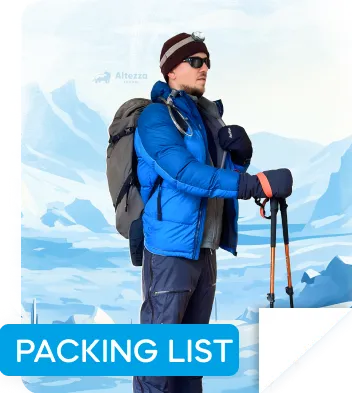
All content on Altezza Travel is created with expert insights and thorough research, in line with our Editorial Policy.
Want to know more about Tanzania adventures?
Get in touch with our team! We've explored all the top destinations across Tanzania. Our Kilimanjaro-based adventure consultants are ready to share tips and help you plan your unforgettable journey.



















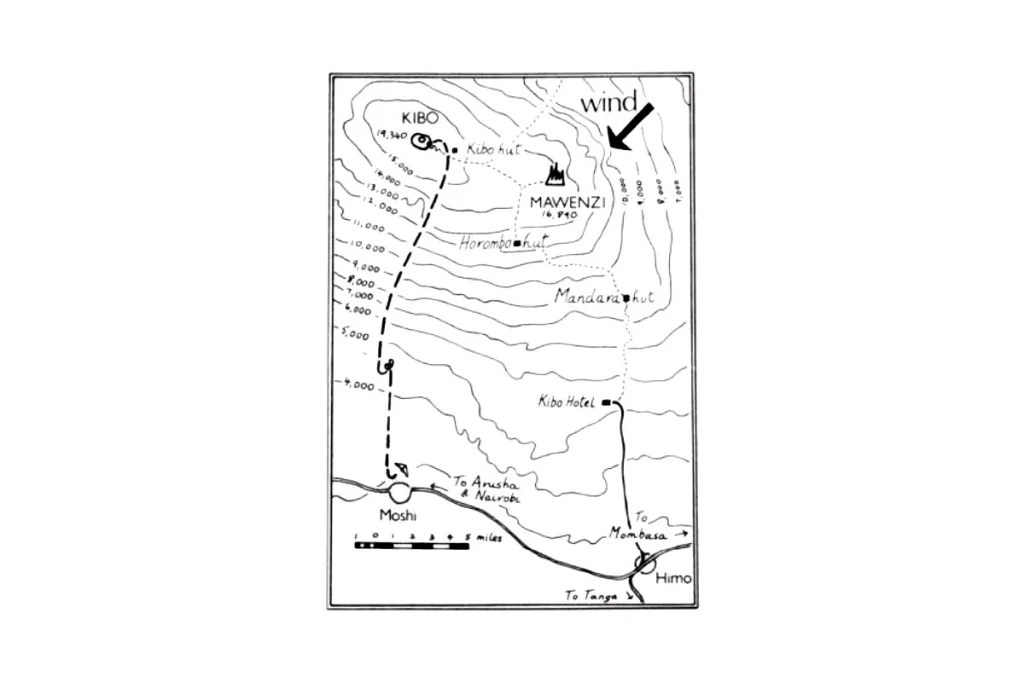

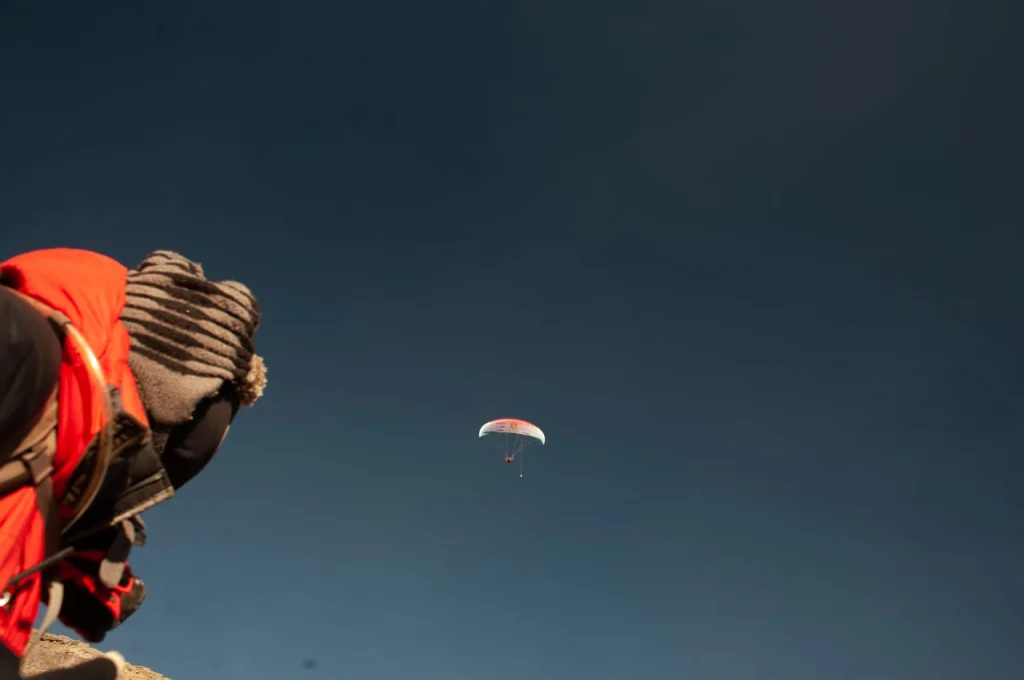
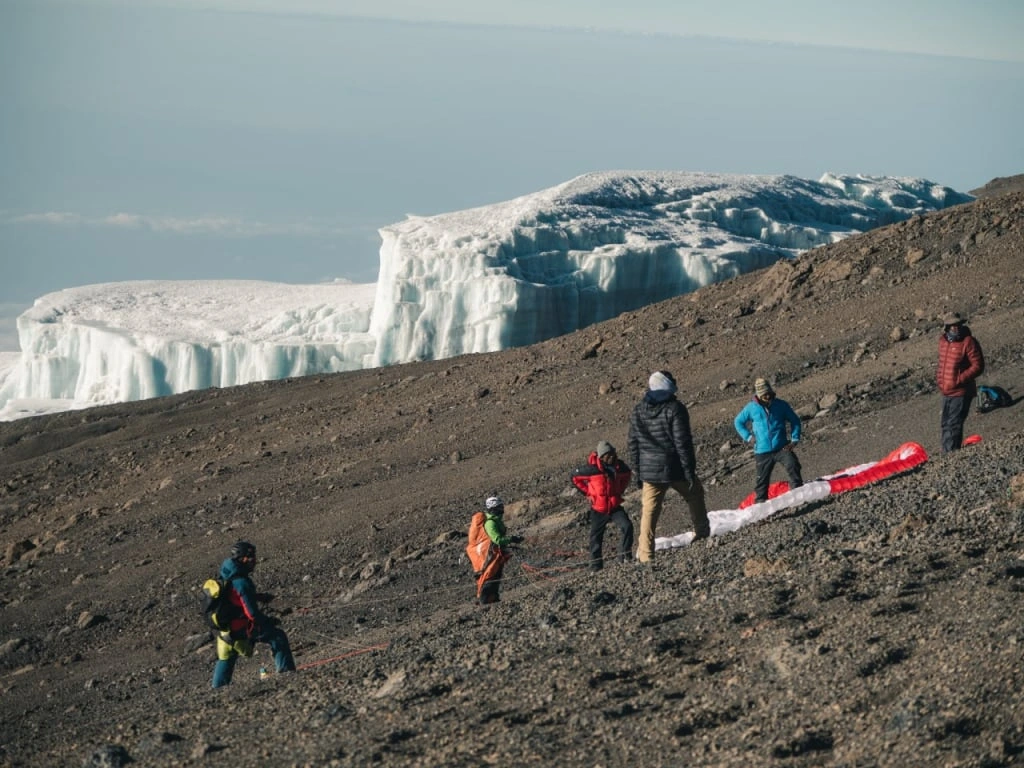





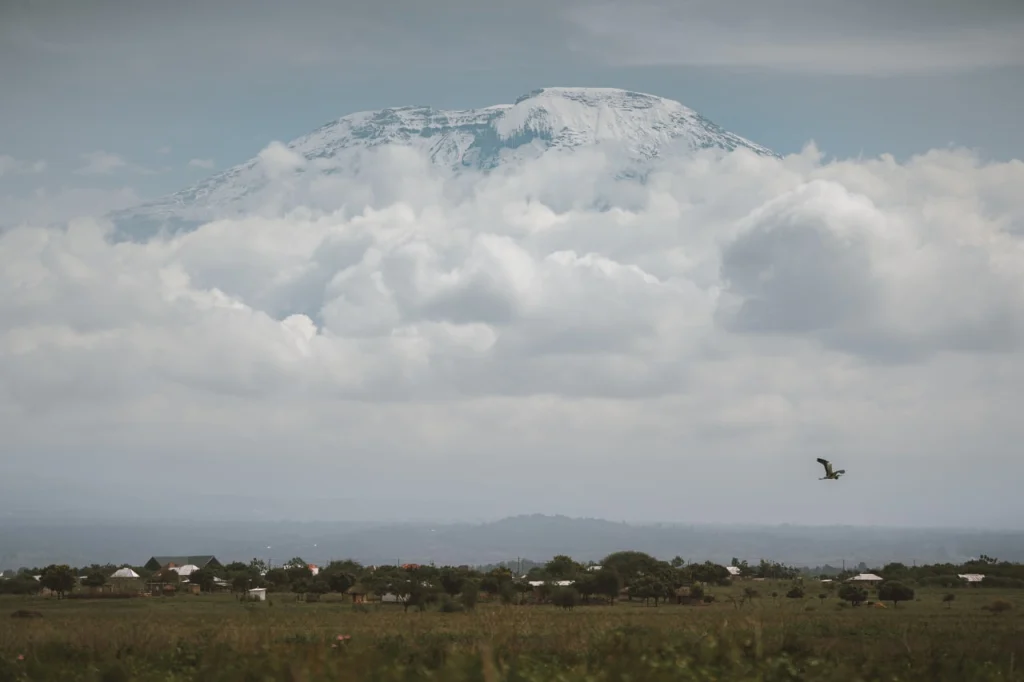
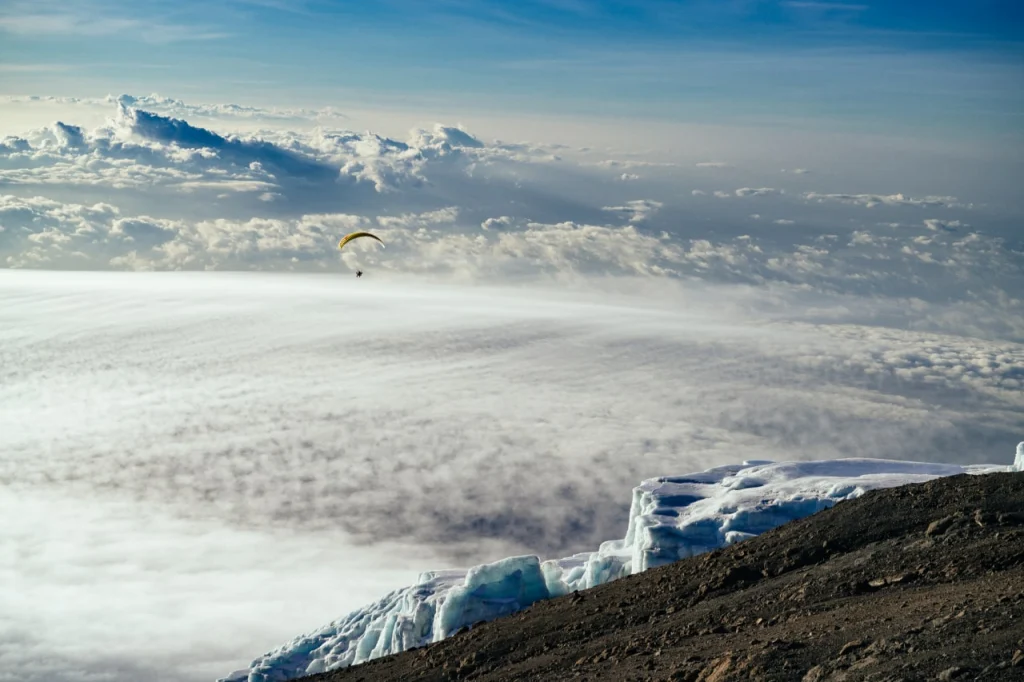


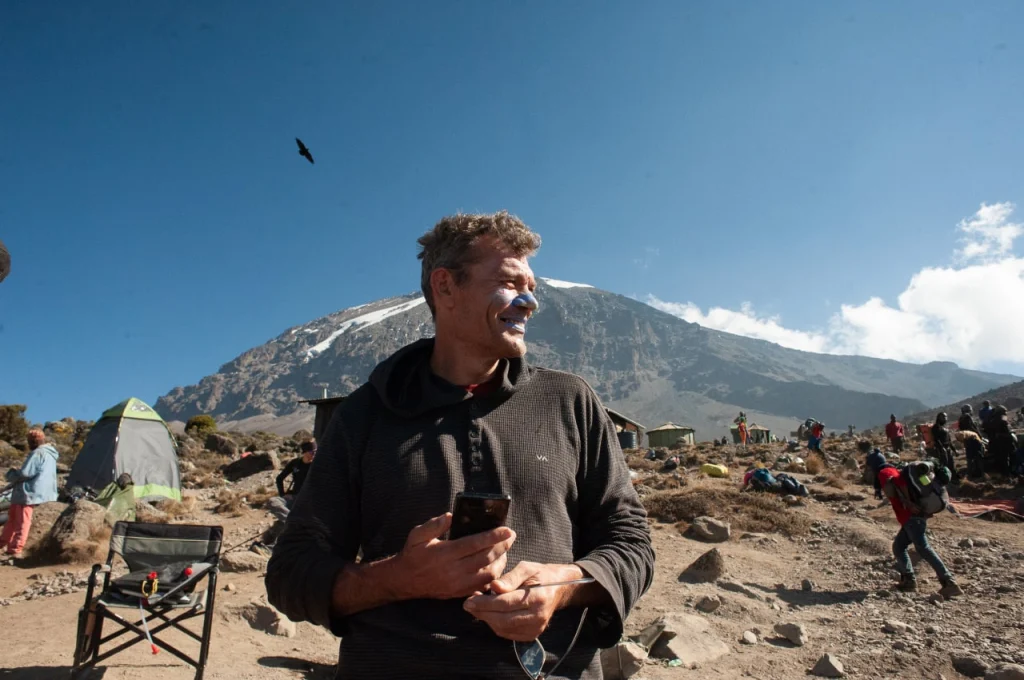


Unfortunately, Kilimanjaro is not suitable for beginners due to the very high altitude and thin air. You need to be a highly experienced pilot, with many hundreds of hours under your belt. Experience in high-altitude flights above 4500 meters is also essential.